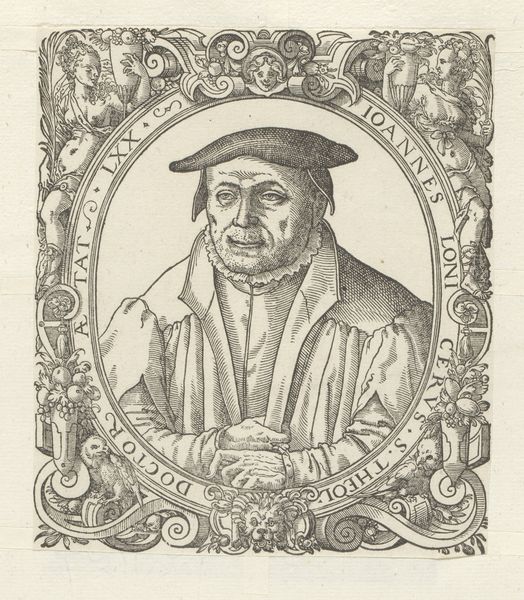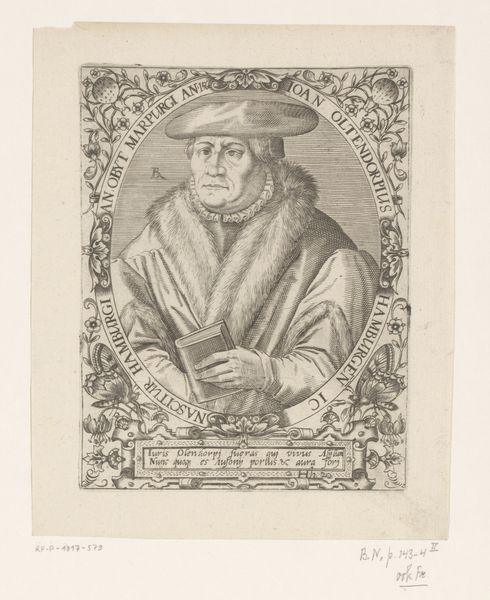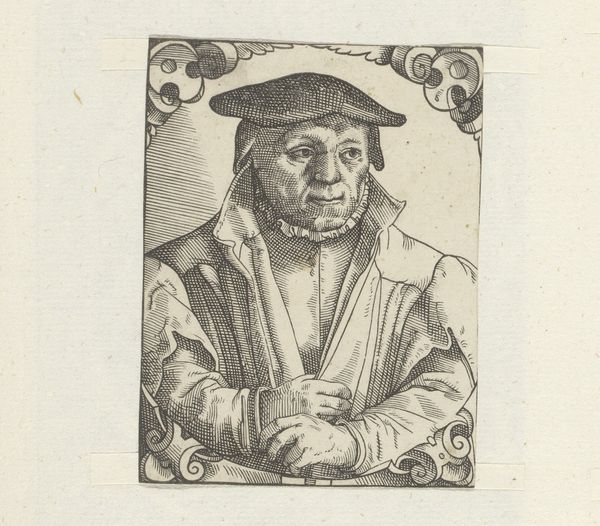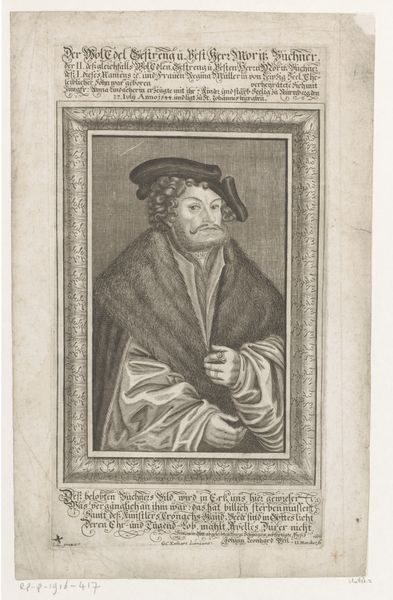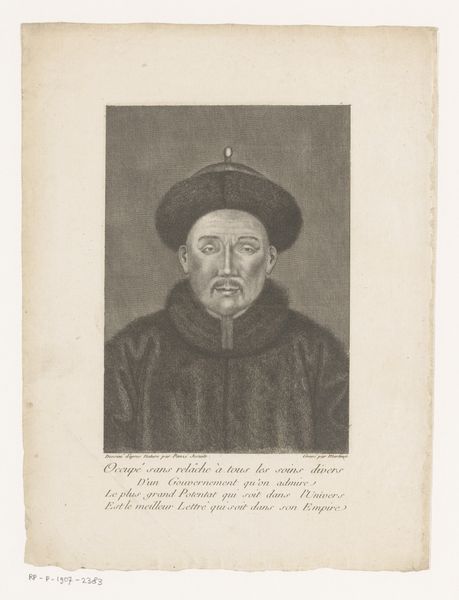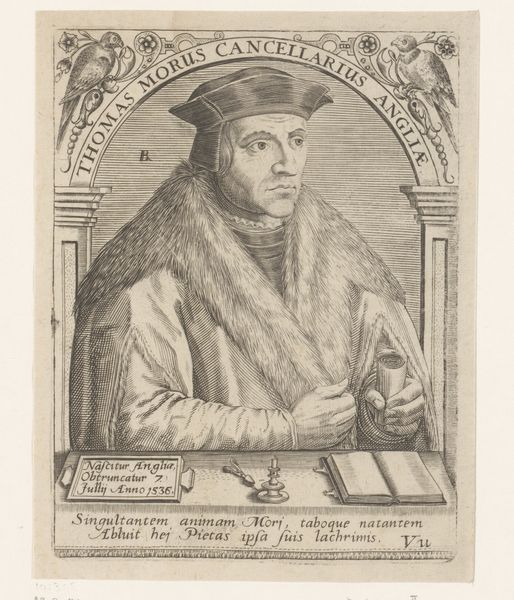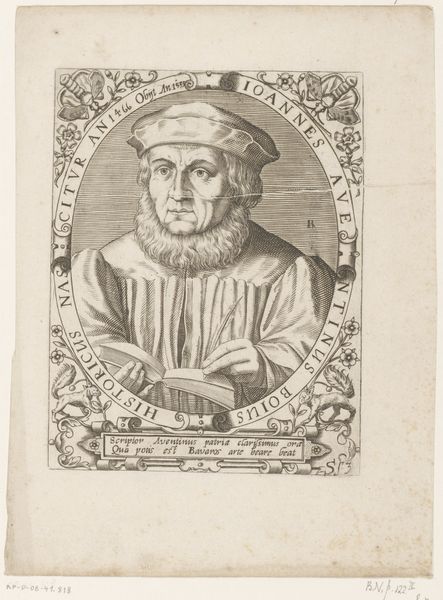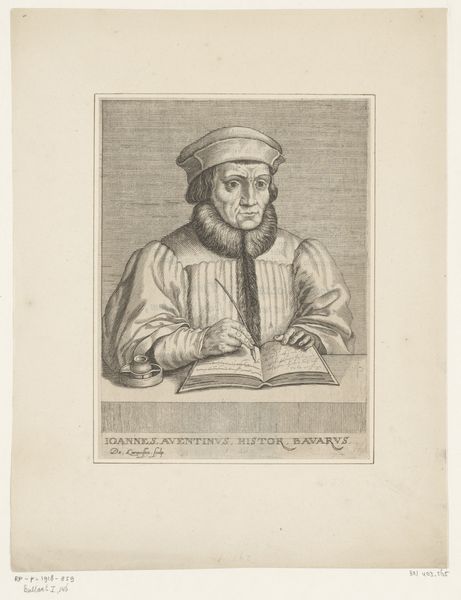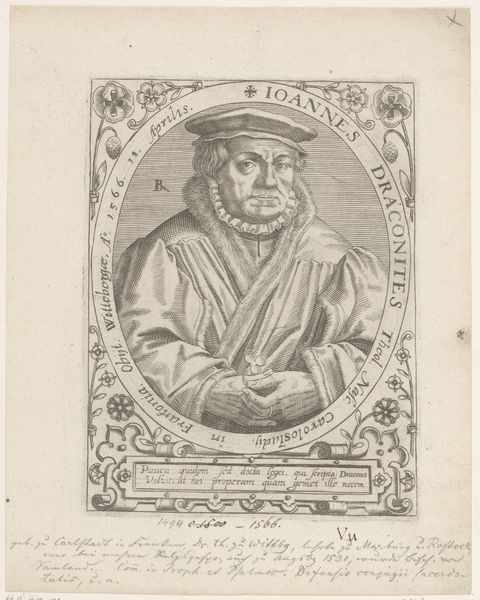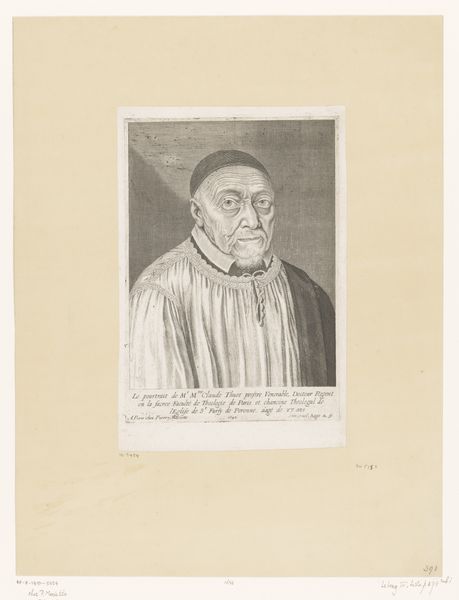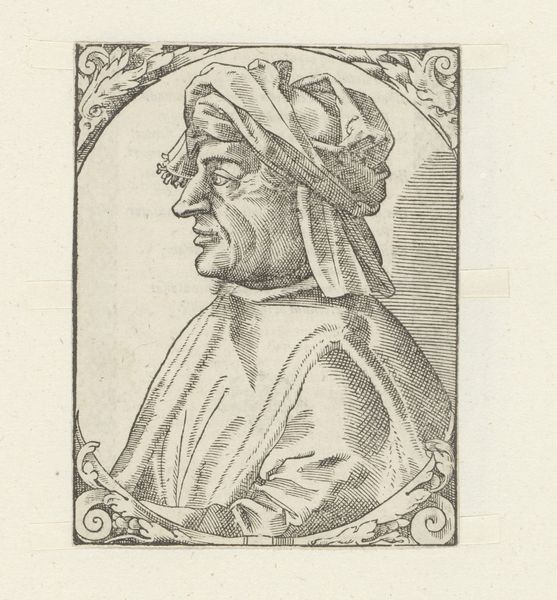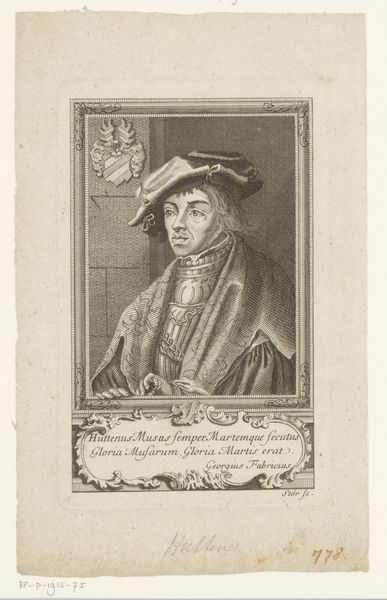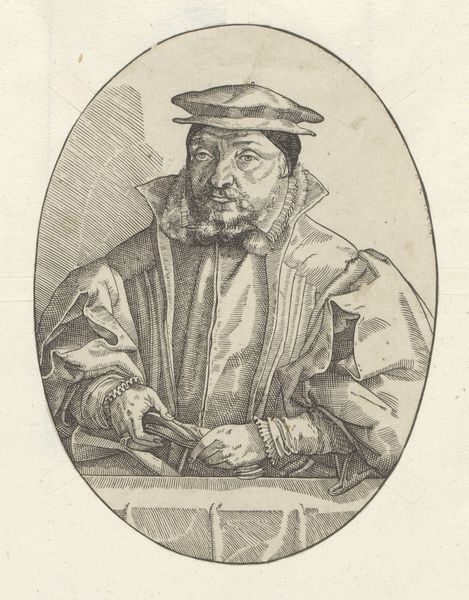
print, engraving
#
portrait
# print
#
caricature
#
mannerism
#
11_renaissance
#
engraving
Dimensions: height 145 mm, width 109 mm
Copyright: Rijks Museum: Open Domain
Curator: I'm struck immediately by the stillness of this portrait. There's a kind of quiet power emanating from the sitter. Editor: Indeed. This is a print, an engraving actually, dating back to the late 16th century—between 1597 and 1599 to be precise. It's housed right here in the Rijksmuseum, and the piece is called “Portret van Johannes Lonicer” by Robert Boissard. Curator: "Portrait of Johannes Lonicer". So, what are the historical currents running beneath this image, do you think? The clothing strikes me, that little cap looks kind of silly to my eye. Editor: The clothing indicates his status and profession; remember, dress was incredibly important for signaling one's place in society. Also, it appears this piece blends the traditions of portraiture with something approaching caricature, a somewhat elevated figure depicted with noticeable distinctiveness. The inscriptions and the rather ornate frame situate Lonicer within a specific humanist intellectual tradition. The whole piece screams Renaissance Man, really. Curator: Renaissance Man! Well said! So what do we know about Lonicer? Why immortalize him in this way? He has really boring expression in this print. I think that makes this more appealing to me personally. Editor: Johannes Lonicer, judging from the inscription 'Theol. et Philos. trilinguis' and its surrounding frame, was a theologian, philosopher, and polyglot. His value as a cultural asset is embedded in religious ideology and intellect. Engravings were vital for disseminating images and ideas at the time; this portrait could have served to promote Lonicer’s reputation, legacy or religious perspectives. Curator: Looking at it that way shifts my perspective. It's less about aesthetic beauty, perhaps, and more about spreading ideas and solidifying one’s standing. He appears serious. But look closer at the lines, so precise, the hatching that defines the shape. Beautiful lines I would argue. The overall effect creates this sense of depth and gravity, like he's peering out through a very specific moment in time. It bridges then and now somehow. Editor: Yes, and even from the perspective of the art world today, that commitment to dissemination – the way such portraits helped to formulate one’s image – certainly offers lessons on performativity, visual legacy, and knowledge sharing. It’s thought-provoking to say the least! Curator: Absolutely! Food for thought about the dynamics between identity, representation, and circulation.
Comments
No comments
Be the first to comment and join the conversation on the ultimate creative platform.
